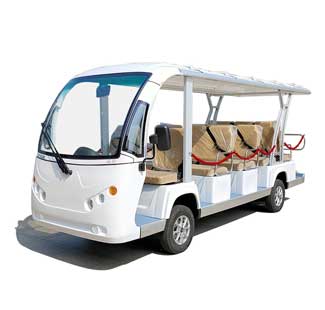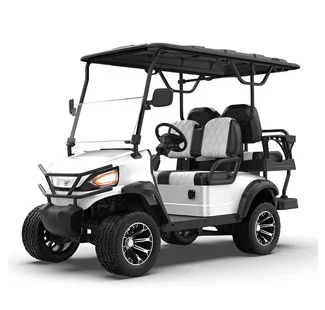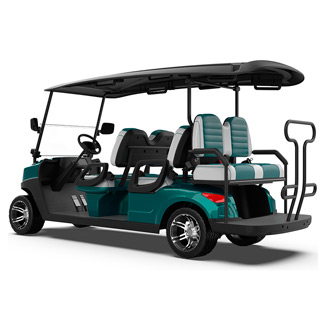Golf carts have evolved far beyond their traditional role of shuttling golfers across lush green fairways. Today, they are widely used for various recreational and practical purposes, such as transportation within gated communities, resorts, and even on some public roads. If you've ever wondered how fast a four-seater golf cart can go, you're in the right place. In this article, we'll explore the factors influencing their speed, the legal aspects, and the modifications that can boost their velocity.
Factors Influencing the Speed of Four Seater Golf Carts
The speed of a four-seater golf cart is determined by several key factors:
Type and Engine
The type of golf cart you have plays a crucial role in its speed capabilities. Electric golf carts are quieter, more environmentally friendly, and often faster than their gas-powered counterparts. The engine's power also contributes to the speed. High-performance electric carts can reach speeds of up to 25 mph, while gas-powered models generally max out at 15-20 mph.
Size and Loading
The overall dimensions of a golf cart can impact its speed. Larger, four-seater models tend to be slower than smaller two-seater carts. The additional weight from passengers and cargo can also affect the speed. Exceeding the recommended weight capacity can lead to a decrease in speed and efficiency.
Terrain
The type of terrain you're driving on can significantly affect the speed of your golf cart. On flat, well-paved surfaces, a four-seater golf cart can reach its maximum speed more easily. However, rough terrain, steep inclines, and off-road conditions will slow it down.
Battery Life
Electric golf carts rely on batteries to power their motors. The condition and capacity of the batteries have a direct impact on the cart's speed. Fully charged, well-maintained batteries will provide more power and, consequently, higher speeds. On the other hand, worn-out or undercharged batteries may limit the cart's speed potential.
Legal Regulations and Speed Limits of Four Seater Golf Carts
When it comes to operating four-seater golf carts, it's essential to be aware of the local laws and regulations. Most regions have specific speed limits for golf carts, especially when they are used on public roads. These speed limits are put in place to ensure the safety of passengers and pedestrians.
In general, the maximum speed for a golf cart is around 20-25 mph, although this can vary depending on the location. Gated communities and resorts might have their own rules, so always check with local authorities or property management to understand the specific regulations in your area.
Ignoring these regulations can result in fines and other penalties. Additionally, maintaining a safe and responsible speed while driving a four-seater golf cart is essential to prevent accidents and ensure the well-being of passengers and others on the road.
The Importance of Safety Features for Four Seater Golf Carts
While increasing the speed of your four-seater golf cart can be enticing, safety should always be a top priority. It's crucial to ensure that your cart is equipped with essential safety features, including headlights, taillights, turn signals, rearview mirrors, and a horn. These features not only make your cart street-legal in many areas but also enhance safety during operation.
Additionally, proper maintenance and regular inspections of your golf cart are essential to keep it running smoothly and safely. This includes checking the brakes, steering, and other critical components to prevent any potential accidents or breakdowns.
In conclusion, four-seater golf carts have the potential to reach speeds of up to 25 mph, depending on various factors such as the type, size, terrain, and power source. However, it's crucial to adhere to local regulations and prioritize safety when operating these vehicles. If you're interested in increasing your golf cart's speed, consider the potential modifications carefully and consult with experts to ensure a safe and effective upgrade. Golf carts can be versatile and enjoyable vehicles, and understanding their speed capabilities is a key aspect of responsible ownership.




